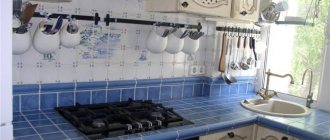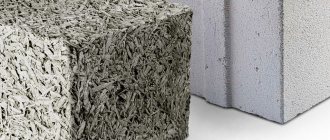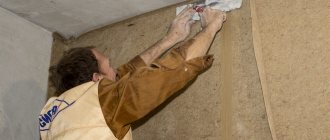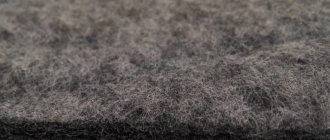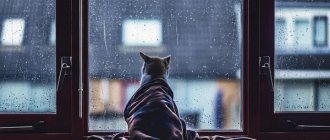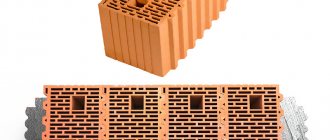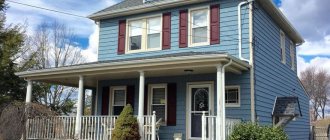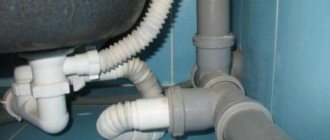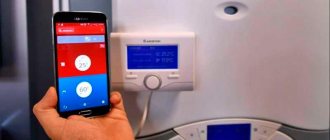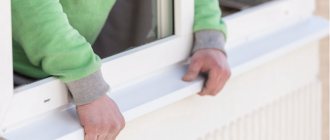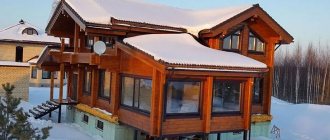You can ensure comfort in an apartment or house if there is complete silence and tranquility. Unfortunately, it is impossible to be alone and quiet in multi-storey panel buildings. Because of the thin partitions, you get the feeling that your neighbors are sitting next to you and discussing something. You can only save yourself from such discomfort by using high-quality sound insulation.
@Knauf
There are two types of noise in the apartment: airborne and vibration. The first is formed during conversation, loudly playing music and other types of sounds transmitted through the air. As for vibration, it can be transmitted over hard surfaces. This noise occurs when operating power tools, household appliances, or when using a hammer. You can get rid of unpleasant and intrusive noises if you use comprehensive sound insulation.
Today, there are many different soundproofing technologies that can be used in residential areas. Depending on the preferences of the apartment owner, you can choose the optimal solution not only in terms of characteristics, but also cost. We will try to look at how to choose the right sound insulation for an apartment, as well as the characteristics and features of the material in this article.
There are two main methods of soundproofing rooms: using a frame and frameless sound insulation. Depending on the parameters of the apartment, you can choose the optimal solution. Of course, if the apartment area is large, then any sound insulation can be used, but if there is not much space, then frameless sound insulation will be the optimal solution. For frameless insulation of a room from noise, the Knauf acubord soundproofing panel is suitable. The products are presented in the form of soundproofing boards, which provide maximum soundproofing effect, while the thickness of the products is relatively small.
Advice! Using such materials, you can most effectively protect your apartment from airborne and vibration noise, which is the main problem of multi-story buildings.
In cases where there is room to turn around, Knauf Acoustic Sound Insulation can be used as an insulating material. Soundproofing boards consist of thin fibers. The characteristics of the product make it possible to improve the noise insulation performance to 52 dB, which is not bad at all. Due to the environmental friendliness of the product, it can be used in various rooms, since it does not have a negative impact on the human body and health. In particular, Knauf acoustics are used for soundproofing apartments, houses and cottages; in addition, it is possible to use insulating boards in public spaces. German manufacturers guarantee effective protection against various types of noise and sounds.
It should be remembered that in order to isolate vibration sound on the frame structure, it is necessary to use cushioning elements in the form of tape. Only in this way will it be possible to completely silence the room.
Specifications
The panels are manufactured using high-tech equipment.
The ends of the slab can be smooth or have the appearance of a locking system. Panel sizes:
- width –1200 mm;
- length - 2 or 2.5 m;
- thickness - 12.5 mm;
- weight 1 m2 - from 8.5 to 9.6 kg;
- density—from 650 to 730 kg/m3.
Advantages of Knauf Acoustic sound insulation:
- quick installation;
- the panels are easy to process;
- harmless environmentally friendly material;
- service life more than 25 years.
The slabs are used for soundproofing interior spaces in office, residential and administrative buildings. They are mounted on metal profile frames on the walls and ceiling. Sheets of flexible material fit tightly to each other.
The light weight and other characteristics of the Knauf Acoustic sound insulation make it possible to transport and fasten the slabs without much difficulty. The products do not lose volume, which allows them to maintain technical characteristics longer than those promised by the manufacturer. Immediately after installation you can feel the quality of sound insulation.
In addition, the installation of slabs makes it possible to improve the thermal insulation characteristics of the room, which is an additional advantage of Knauf Acoustic products.
Correct installation of Knauf
In order to ensure maximum sound insulation in an apartment or living room, proper installation of knauf acoustics is necessary:
- To build the frame, apply markings to the ceiling, floor or walls.
- Apply special Knauf sealing tape to the outer side of the guide metal profiles.
- Secure the profiles to the walls, ceiling or floor with dowels. The distance from the wall to the first fastener is at least 20 cm, the step between subsequent dowels is 60 cm.
- Attach the vertical profiles at a distance of 60 cm from each other. The profile closest to the wall should be at least 20 cm away.
- Apply Knauf sealing tape to the outside of the structure.
- Attach the panels to the frame using self-tapping screws. The fastening step is 20-25 cm. Fix the sheets so that there is a small gap from the ceiling, load-bearing walls and floor.
- Measure and cut Knauf Acoustic fiber soundproofing sheets. Their width should be 1 cm greater than the width between the rack profiles.
- Insert the prepared sheets between the profiles, slightly pressing the material - the plates will stand end-to-end and will not fall out of the structure.
- Using putty, cover the resulting structure on the reverse side, carefully filling the joining seams.
- Let the putty dry thoroughly.
If you are installing Knauf Acubord soundproofing panels, then everything is a little simpler. There is no need to build a frame - just secure the gypsum sheets with universal 4.2x65 mm self-tapping screws to the light partition. There is also no need to leave gaps during installation, and there is no need to screw additional dowels into the mats.
When attaching sheets to aerated concrete walls, use 4.2x65 mm self-tapping screws together with 6x40 mm dowels. Sealing the joining holes and preparing the structure for finishing is similar to the technology used when installing conventional Knauf plasterboard.
Soundproofing cladding. Design.
Soundproofing cladding consists of a metal frame and two or three layers of KNAUF slabs attached to it on one side. The cladding is fastened to the protected wall using soundproofing fasteners with direct hangers. The perimeter frame may or may not be connected to the building envelope and secured to the base as an additional measure.
The frames of soundproofing claddings are filled with acoustic mineral wool. Electrical cables and sanitary communications can be laid inside the frames.
Expansion joints of the building should be taken into account in the design of the cladding frame. In long-term claddings, expansion joints should be placed at maximum intervals of 15 m.
Dimensions and scope of application
The TeploKnauf mineral wool series is intended for use in private construction. It is sold in soft rolls and slabs, compressed in packaging 2 to 8 times. This solution greatly facilitates the transportation of products, but the consumer, after removing the film, will have to wait several days for the fibers to align and return to their original volume. The manufacturer offers several types of products.
- Product for the cottage - offered in the form of mats with a thickness of 50 or 100 mm. It is used for inclined and vertical structures, it has a high rigidity index, due to which it is installed between the rafters or in the wall sheathing.
- For roofing – thickness 50 and 150 mm with canvas parameters 5.5 x 1.2 m. It has “Aquastatic” impregnation, thanks to which it perfectly repels water.
- For floors - roll thickness 50 mm, canvas size - 7.38 x 1.22 mm, the package contains 2 pressed mats. This line of the manufacturer retains heat, absorbs sound and protects walls from dampness.
For professional use, the company offers Knauf Insulation products, which have been on the market for quite some time and have already earned a huge number of positive reviews. There are several options available.
- "ThermoPlate" 037 is an insulation material designed to protect fences and floors.
- "ThermoRoll" 040 - used for insulating interior partitions, attics and pitched roofs. Available in a thickness of 50 mm with sheet dimensions of 1.2 x 10 m.
- AcoustiKnauf - sold in the form of slabs 1230x610x50 mm and in the form of rolls 7.5x0.61 m. It has a high level of elasticity of thin and long wool fibers and good sound insulation. Products are used for internal partitions and interfloor ceilings.
The Knauf company offers a wide range of mineral wool for pitched roofs. For rafter roofs with a large slope and attics, it is recommended to buy hard slabs, and for attics and flat surfaces of different sizes, both 6 m2 and 9 m2, it is better to use soft rolls.
- "ThermoRoll" 034 and 037A - these two products have different thermal conductivity. The first product is offered in mats with dimensions of 1.2x5 m with a thickness of 50 mm, the second - rolls of 150 mm, sheet length 9 m.
- “ThermoPlate” 034 and 037A are slabs with dimensions of 1250x610 mm and a thickness of 50 mm. There is a range of products with a thickness of 100 mm.
The company also offers facade insulation in the form of rigid mats with excellent energy-saving properties. All mats in this series have the same dimensions - 1.25 x 0.6 m.
Knauf insulation
The company has developed several lines for professionals and for those who want to insulate themselves. The materials in the Knauf insulation line show the maximum insulation and sound insulation characteristics for basalt wool.
Knauf insulation technologies are based on creating the thinnest and longest fiber. This type of fiber not only provides premium insulation quality, but gives additional strength to the material, and also enhances the effect of 3D elasticity: the wool returns to its original appearance and volume after any compression.
Knauf insulation for insulating a frame house.
The high standards of the manufacturer allow us to talk about the safety and environmental friendliness of the insulation; in particular, the materials do not contain harmful phenols and other volatile compounds that could negatively affect health.
Main characteristics
Now let’s find out why Knauf Acoustics slabs have the above properties.
- Perforation on the surface. Many through holes act as resonators, providing sound absorption. As a result, sound waves quickly attenuate, falling into a kind of trap.
- The non-woven fabric on the back side also has sound-absorbing properties. Depending on the design, you can choose gypsum boards with black or white non-woven fabric.
Acoustic gypsum board "Knauf" has several options for the location and shape of holes, by which the material model is determined:
- With continuous perforation. On this model, the holes are distributed evenly over the entire surface.
- With block perforation. The holes are located on the plane in separate groups.
- With round perforation in the form of holes with a diameter of 0.8 cm.
- With square perforation, where the holes are made in the shape of a square with a side of 1.2 cm.
- With scattered round perforation - the holes on the surface are located in a chaotic manner and have different sizes - 0.8 cm, 1.5 cm and 2 cm.
Acoustic drywall
Acoustic drywall is needed to improve the acoustic characteristics of a room. He can:
- reduce the amount of background sounds appearing in rooms;
- reduce hum;
- eliminate echo;
In such a room, speech is perceived much better.
Drywall is produced with different shapes and locations of holes:
- Continuous perforation (over the entire surface).
- Block perforation (in separate groups).
- Round perforation (holes with a diameter of 8 mm).
- Square perforation (square with a side of 1.2 cm).
- Scattered round perforation (with different hole sizes).
Drywall from the KNAUF company is light and elastic, quickly processed, and can be painted.
Advantages of Knauf Acoustics slabs
Acoustic drywall has many advantages compared to similar materials:
- The price matches its quality.
- Safe, environmentally friendly material can be installed in residential areas.
- Perforations of various shapes and sizes make it possible to select a material with the required level of noise absorption.
- Various types of soundproofing plasterboard edges allow you to finish walls and ceilings with an invisible joint.
- The material can be used to create curved surfaces.
In addition, acoustic plasterboard from Knauf:
- Lightweight and flexible.
- Easy to process and install.
- Allows you to apply paint of any color.
- Eliminates the need for wet work.
Types and description of Knauf Acoustic
All Knauf Acoustic sound insulation can be divided into 2 categories - framed and frameless. Consumers most often choose fiberglass panels used in the construction of metal structures and plasterboard cladding. There is such a type of plates as Knauf Akubord. It does not require a frame, and the material itself is great for blocking noise in rooms and small apartments/houses.
The basis of the panels is a gypsum layer and fibrous raw materials. The slabs can be mounted even on unleveled walls, since they are installed using the groove method. A special technology for connecting parts makes it possible to achieve complete sound insulation with sound-proof seams. The slabs are installed directly to the wall of the room. In this case, only vibration-isolating fastening dowels are used.
Knauf sound insulation is also presented in the form of Knauf Insulation slabs, which, in addition to soundproofing properties, have the ability to create an acoustic effect. In addition, the panels are based on a fabric component - white or black. This is convenient for interior design.
The main difference between the Knauf Insulation board and its analogues is the holes. The appearance and cross-section are selected depending on the wishes of the consumer. The panels have two important qualities: they not only protect the apartment/office from extraneous sounds, but also add variety to the interior thanks to their aesthetic design.
Despite the fact that Knauf products are presented in a wide range, the most popular are Knauf Acoustic fiberglass boards. The products do not endanger health, they are harmless to humans and nature, and their purpose is universal.
Distinctive features
The main advantage of Knauf panels is their excellent quality, because they are manufactured using modern equipment using German technology. Contrary to this, the price of the product is quite acceptable for the average buyer, especially those undertaking large-scale renovations. If you compare gypsum-based slabs and soundproofing wool, the differences will be significant.
The first difference is the structure of the material. The second is that there is no need to build a frame for the gypsum panels. Knauf soundproof plasterboards are also used for leveling walls and ceilings. The soundproofing layer in them is no more than 5 cm, which makes the material very convenient for finishing small rooms. Today there are many ways to achieve complete sound insulation. If there is a chance to use a frame that will not damage the space, then the craftsmen recommend choosing fiber panels - they “eat up” any unpleasant noises and sounds as much as possible.
There is also a dry soundproofing mixture Knauf Akustikputz. It combats extraneous noise, has no joints during application, is homogeneous in its structure, and does not require fastening. Before working with such a mixture, there is no need to level the walls and ceiling.
Advantages of Knauf Acoustic slabs
The main advantage of the material is its ability to absorb various types of sounds and noise. The soft base captures and absorbs sounds as effectively as possible. Thin fibers provide good air and steam permeability, which makes it possible to use insulation in rooms with high humidity. The flexible structure helps insulate and isolate sewer sounds. The material can be tightly wrapped around the pipe, thereby reducing the noise of the sewer drain. You can use cotton wool both for apartments and private houses. Quite often, Knauf ceiling soundproofing is used as insulation for roofs, attics and attics.
@Knauf
Speaking about the advantages, one cannot fail to note the environmental friendliness of the material. The product is made from natural raw materials, so it does not contain any harmful elements or resins. Knauf soundproofing walls are odorless, so they are often used in soundproofing residential buildings and public spaces.
The material is easy and convenient to work with. Considering the light weight of the material, it does not require special equipment for loading and transportation. One package contains 16 slabs measuring 1250*610*50 mm. This number of slabs is enough to cover an area of twelve square meters. To work with the slabs, you do not need special equipment or tools; the installation technology is similar to those used when installing basalt or mineral wool.
@Knauf
Knauf ceiling soundproofing is carried out using a structure made of aluminum profiles or wooden beams. Due to the parameters of the slabs, the frame base is built according to generally accepted dimensions with a step width of 60 centimeters. The slabs have the same width, which makes it possible to use sound insulation with virtually no waste.
Soundproof ceilings. Design
KNAUF soundproof suspended / suspended ceilings are fixed to the ceiling using direct hangers with an elastic soundproofing element Vibrofix. KNAUF soundproof suspended ceilings are fixed to the ceiling using adjustable hangers (a spoke with an eye and an anchor) with an elastic soundproofing element.
Knauf slabs are fixed to a suspended metal structure made of the main and load-bearing profiles (D112) or a suspended metal structure made of the main and load-bearing profiles at one level (D113). Expansion joints of the building should be taken into account in the design of the ceiling frame.
In large area ceilings, expansion joints should be installed at a maximum interval of 15 m.
Advantages and disadvantages
Knauf Acoustic sound insulation, like any building material, has its advantages and disadvantages. If we talk about the advantages of the material, there are a lot of them, and they are as follows:
Non-flammable material belonging to the “NG” group. Such characteristics allow the use of insulating boards in areas with increased fire hazard. The durability of the product makes it possible to use insulation boards for at least fifty years, while they do not lose their properties and characteristics. Due to the fibrous base of the panel, rodents, insects, fungi and mold are not afraid of. Such indicators make it possible to use insulating material under conditions of high humidity. The stove does not contain harmful components that have an unpleasant odor, so they can be used even in rooms for allergy sufferers and children. During the process of working with slabs, cutting and installation, a lot of dust does not form, which causes less clogging of the room being processed and saves time on cleaning. The soft base does not cause discomfort during installation of soundproofing. The elastic base easily returns the original shape of the slab structure. The product contains natural ingredients. The adhesive base consists of wood resins that do not have a negative effect on human health and well-being. Affordable cost of slabs. Compared to analog materials, the cost of acoustic kunaf sound insulation is suitable for an average family with an average income
Using such sound insulation you can not only effectively protect your home from noise, but also spend a minimal amount of time and money on it, which is important. @Knauf
@Knauf
Despite all the positive qualities of acoustic Knauf sound insulation, there is one minor drawback: during installation it is necessary to create a profile frame. This sound insulation takes up space in the room. To be more precise, on average the thickness of the insulation will vary around ten centimeters. Considering that the distance will be removed from each wall, the area of the room being treated will decrease somewhat. The insulating material simply has no other disadvantages, which explains its popularity among buyers.
Reviews
According to customer statements, Knauf Acoustic sound insulation is an excellent material that completely solves the issue of extraneous sounds in the home. Consumers also note that the material is safe even for small children due to the absence of resins in the composition. The mats do not have a sharp, unpleasant odor, and when cut they do not generate dust and are easy to cut.
The main disadvantage, according to most consumers, is the cost. However, the price is compensated by the high quality and durability of the sheets.
TechnoNIKOL
The Technonikol Corporation was founded in 1992 and specializes in the production of roofing materials, hydro- and thermal insulation. Sound insulation is represented by slabs of mineral wool based on basalt rocks, as well as rolled material based on bitumen-polymer.
- to soundproof the floor under the screed, use the Technoflor and Technoelast line;
- for work with walls, partitions and suspended ceilings, choose Technoacoustic
A special feature of floor coverings is the combination of sound and waterproofing properties. This is very convenient if work is carried out in wet areas or you need to fill the screed. Main technical characteristics of TechnoNIKOL
| Characteristics/Product Line | Technoflor | Technoacoustic | Technoelast |
| Peculiarities | Dense slabs 1200×600 mm made of stone wool, covered on one side with fiberglass. For sound and heat insulation of floors. Non-flammable. | Slabs 1200×600 mm made of basalt fiber for installation in a frame system. They provide absorption of extraneous noise and also act as thermal insulation. Non-flammable. | Bitumen-polymer material in a 10×1 m roll with an aluminized film on the top side. For floor work. Suitable for waterproofing premises. |
| Modifications and their purpose | Standard – for floating floors, laying the screed directly on the material. Prof – for any floors with increased loads. | Packages with different numbers of slabs. | Acoustic C - without a base with a self-adhesive overlap on the sides. The soundproofing fabric is glued with a bitumen binder with a metallized film. Acoustic Super A350 - with a fiberglass base and double-sided coating with a bitumen-polymer binder. On one side there is a thermally bonded sheet, on the other there is an aluminized film. Provides absolute waterproofing. |
| Thickness, mm | 40 and 50* | 50 | 2.5 and 4.8** |
| Surface density, kg/m² | 4.4 and 8.6 | 2,1 | 0.7 and 2.2 |
| Impact noise level reduction index for floor modifications, ΔLnw, dB | 37-39 | — | 23 and 26 |
| Average sound absorption coefficient, αw | — | for low and high frequencies: 0.4-0.8 for mid frequencies: 0.8 | — |
| Price, rub./m² | 190 and 405 | 116 | 241 and 231 |
* The first value is for Standard, the second is for Prof. ** The first value is for Acoustic S, the second is for Acoustic Super A350.
Be sure to watch a short video about using Technoacoustics to reduce noise transmission through walls:
ALBUM CONTENTS
W112 – KNAUF partition on a metal frame
W115 – KNAUF partition on a metal frame
W623 – KNAUF cladding on a metal frame
W626 – KNAUF cladding on a metal frame
D112 – KNAUF suspended ceiling on a metal frame
D113 – KNAUF suspended ceiling on a metal frame
How to choose roof insulation
Before purchasing insulation, read the information about the materials used and the manufacturer. Study the characteristics of the thermal insulator you choose. But the most important thing is to calculate the insulation for the roof
Consideration of principles when choosing insulation
The only thing I would like to note is the choice of material, depending on the type of roof (flat or pitched). The remaining criteria are the same for everyone.
So, eight criteria:
Life time. If the insulation is of high quality, then it retains its thermal insulation properties for a long time. Specific gravity. It is affected by the density of the insulation, which is measured in kg/m3. The material should not be too heavy, otherwise it will make the entire structure heavier. And this threatens with dangerous consequences. Form stability
When purchasing material, pay attention to the technical specifications. Especially regarding the length of time the insulation retains its geometric parameters
In other words, it defines reliability. Flammability. It is recommended to give preference to non-flammable and self-extinguishing materials. Cold resistance. A relevant criterion, especially for the northern regions. Humidity. There are materials whose thermal conductivity deteriorates with increasing humidity - this is not a plus. Soundproofing. If the roof covering is made using noisy material, then the insulation must have soundproofing properties. Environmental friendliness. The insulation should not have an odor or be toxic.
Installation of rockwool insulation, watch the video:
So, let's move on to the types of insulation themselves.
Types of insulation for roofing:
- Foamed polystyrene foam
- belongs to the class of foam plastics, consists of gases that fill the material. As a rule, it is used to insulate flat roofs. The service life is about 50 years. Significantly more effective than mineral wool because it is lightweight. - Polyurethane foam
- used for insulation work on the roof or attic. Belongs to the group of gas-filled plastics. It has low thermal conductivity and is light weight. The material is not susceptible to moisture and vapors, and also has a long service life. - Stone wool
, slabs of which consist of mineral wool. The material retains heat well and is not exposed to fire. Stone wool has low moisture absorption and is resistant to rodents and microorganisms. - Glass wool
- made from glass production waste and boasts good thermal insulation characteristics.
The most popular are stone slabs. After all, they are suitable for insulating both pitched and flat roofs. If we talk about manufacturers, then I would like to mention “Knauf”.
Areas of application of Knauf insulation
When is it logical to use knauf insulation in the construction of frame houses? Primarily for high-quality thermal insulation and reliable sound insulation. Let's consider the areas of application of KNAUF insulation.
- Thermal insulation of walls, both external and internal.
- Thermal insulation of foundations.
- Heat and sound insulation of floors.
- Enhanced sound insulation of buildings located near highways and railway lines.
- Thermal insulation of the roof.
- Thermal insulation of individual spaces, such as balconies, loggias, basements, attics.
- Insulation of non-residential buildings, including unheated premises for keeping animals.
Teploknauf for the roof of a frame house.
That is, we have reliable insulation with increased sound insulation properties. This feature allows the use of KNAUF insulation in suburban construction of frame houses, insulation of constructed houses, organization of sound insulation between floors and parts of the house.
Composition and characteristics
Knauf Acoustic soundproofing consists of fiberglass and is available in the form of mats or slabs. It is worth noting that the structure of the product is similar to mineral or basalt wool, which today are often used as insulating materials. Air is retained between the fibers of the boards, which makes the material ideal not only for sound insulation, but also for thermal insulation.
@Knauf
It should also be noted that the structure of the fibers does not rot or decompose when in contact with a humid environment, which significantly expands the range of applications of the boards. Thanks to the soft base of the material, it absorbs sound waves well, reducing airborne and vibration noise. The porous base allows steam and air to pass through well, so when using Knauf, fungus and mold do not form on the wall surface. Considering all the properties of the product, we can confidently say that this material can be considered one of the best of its kind.
Knauf insulating mats do not burn, as evidenced by the NG indicator. In the event of a fire in the premises, it provides protection for wooden structures. Also, under the influence of temperature, the stove does not emit harmful toxic substances that negatively affect the human body and health. Thanks to these properties, sound insulation is actively used in residential premises, hospitals and canteens.
The service life of the panels is 50 years, and this is a general indicator, and the insulation can be used much longer without losing its qualities and characteristics. The material does not react to temperature changes, which allows the products to be used as thermal insulation.
Mats are produced with dimensions of 1250*610*50 millimeters. The package is twelve square meters. If expressed in quantity, it turns out to be 16 mats in one package. The compact shape of the container allows you to easily carry and transport the products. Acoustic Knauf soundproofing has characteristics that in many ways exceed their analogues. If you use, then only products from a reliable and trusted supplier.
@Knauf
Products can be installed in a frame base and covered with plasterboard sheets. This soundproofing option is considered the most effective and is suitable for any type of room with sufficient area. Due to its light weight, soundproofing measures can be carried out independently, without involving specialists.
Knauf Insulation - insulation for professionals
If the TeploKnauf line of insulation products was developed for self-insulation of a house, and working with them did not require any special professional skills, abilities, knowledge, or tools, then the professional line of Knauf Insulation insulation products are professional-quality materials for multi-story construction and are aimed at industrial and social construction.
A feature of the line is the division of insulation according to purpose:
- For façade insulation.
- For roof insulation.
- For soundproofing.
The scope of application is determined by the specific technical characteristics and installation features. The KNAUF Insulation size range is wider: 50 mm, 70 mm and 100 mm in thickness.
Do-it-yourself insulation of the frame.
Facade KNAUF Insulation
The material was developed for insulating external walls made of any material and built using any technology. Knauf Insulation insulation is perfect for insulating buildings made of brick, blocks, concrete slabs, and houses built using frame technology.
Today, knauf insulation insulation for facade systems is produced in two slightly different variations: Thermoplate 034A and Thermoplate 032A. They differ primarily in density, and as a result, in the quantity and volume in the package.
Insulation for walls Knauf facade is mounted between two layers of the wall - internal and external; it is often used to create ventilated facades, as well as when sheathing a house with siding systems. Special impregnation with water-repellent compounds ensures that the insulation does not lose its properties upon contact with atmospheric moisture.
KNAUF Facade allows you to reduce the cost of heating buildings by 2 or more times.
On a note
The Knauf Insulation façade is optimally suited for industrial construction, as well as for insulating the walls of social infrastructure facilities. It is often used as the main insulation for agricultural buildings where animals are planned to be kept year-round.
Knauf Ecoroll
Special mention should be made about the material for horizontal surfaces. Knauf Ecoroll insulation is designed specifically for insulation and sound insulation of floors and ceilings on joists. A special feature of the insulation is its high vapor permeability, which ensures proper steam and air exchange in the room and guarantees not only comfort for residents, but also protection from moisture and mold.
KNAUF ECOROLL is very popular when constructing houses using frame technology.
Pitched roofing KNAUF Insulation
A special development by KNAUF will allow you to easily insulate a pitched roof. Features of the material are a convenient form of release, which allows you to quickly install insulation on inclined surfaces, as well as high-quality impregnation with Aquastatic water-repellent compounds.
Insulating the roof with KNAUF Insulation pitched roofing material will not only protect the house from freezing in winter, but will also provide a comfortable indoor temperature in the summer heat, and will also soundproof the rooms on the roof side.
Knauf for roof insulation.
KNAUF Insulation pitched roofing is a solution for those buildings where the top floor is an attic, and iron or metal tiles were chosen as the roofing material. The material will absorb unwanted sounds that inevitably occur during rain.
In addition to Knauf roofing systems, roofing insulation is popular for insulating floors on joists on the first floors and in attics.
KNAUF Insulation pitched roofing is available in two thicknesses of 100 and 50 mm and two types of slab and roll, which allows you to select the material so that a minimum amount of scraps remains during installation.
Other manufacturers
You can also find Tecsound and Soundguard products. These manufacturers offer original developments, for example, membranes, the effectiveness of which is comparable to using a regular gypsum board sheet. Only in the latter case will the thickness of the partition increase by 5-7 mm, but this will reduce costs several times.
In order not to be unfounded, as an example we give a test of the Texound material:
And here is a small test comparison of gypsum board and Soundguard
Pay attention to the different box designs. Everything is done in order to demonstrate the advantage of ZI, which really does not exist:
These manufacturers also have mineral wool-based materials that are really effective. However, unlike Russian analogues, their cost is 3-5 times higher.
Description of mineral wool brand "Knauf"
View gallery
Mineral wool "Knauf" is also called stone wool and is made, no matter how funny it may sound, from stones. This material is also called basalt wool, the production of which uses stones of lava origin. They are melted down, and then binders are added to them. The fibers are formed into rolls or solid slabs.
Mineral wool can be produced using different technologies using different materials. The production process affects the technical characteristics of basalt and mineral wool. Traditional mineral wool is good, but can be susceptible to moisture, dust and be harmful. All these troubles were overcome within the framework of modern production. As a result, it is possible to obtain an almost ideal insulation.
Knauf mineral wool is produced without the use of formaldehyde and phenolic resins. Almost all the negative reviews about the dangers of mineral wool used to be aimed precisely at the fact that when exposed to high temperatures, the material begins to emit phenol fumes, which are quite toxic.
The material described does not contain harmful resins, and therefore no harmful fumes. The same can be said about the ability to emit dust. It negatively affects a person's lungs and irritates the skin. However, most often mineral wool does not generate dust. This characteristic is characteristic of glass wool. However, if the mineral wool fibers are poorly formed, they can break, which causes the release of dust.
